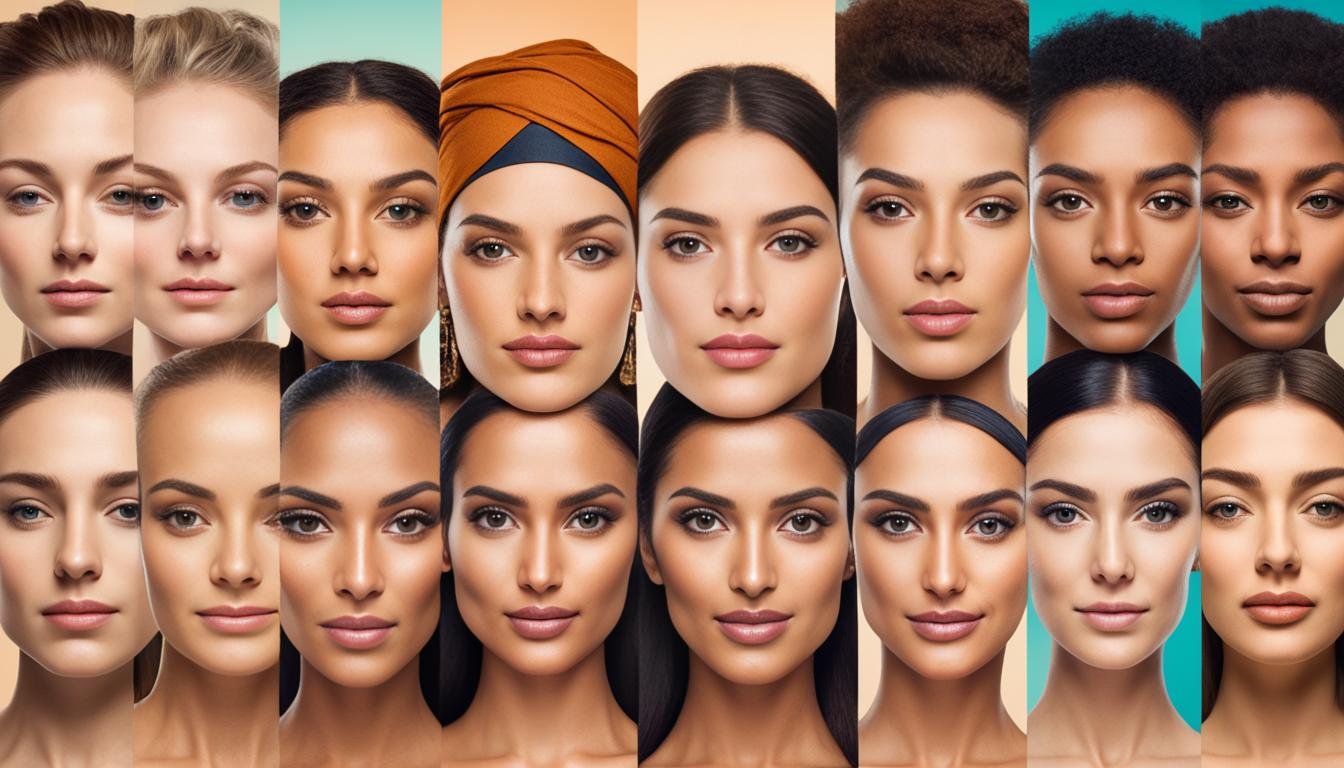Why are there varying skin colors around the world?
Have you ever wondered why people around the world have different skin colors? It’s not just a matter of aesthetics; there are fascinating scientific and historical reasons behind this global diversity. From genetic factors to geographical impact, skin pigmentation variations have a complex interplay that has shaped human evolution and cultural perceptions of beauty.
Let’s explore the genetic factors that influence skin color. Our DNA holds the key to determining our skin pigmentation, with genes influencing the production and distribution of melanin, the pigment responsible for skin color. But why do different populations have different skin tones? The answer lies in the evolutionary origins of skin colors. Historically, humans with darker skin tones evolved in regions of high UV radiation, providing protection against skin cancer. Conversely, those in regions with lower UV radiation developed lighter skin tones to enhance vitamin D absorption.
Geography also plays a significant role in skin color variation. The geographical impact on skin color is profound, as populations adapted to their environmental conditions. For example, individuals living closer to the equator tend to have darker skin tones, while those in northern latitudes exhibit lighter skin tones. This remarkable diversity showcases the adaptability of the human species to its surroundings.
Cultural perceptions also contribute to the variation and significance of skin tones. Throughout history, different cultures have attached specific meanings and value to certain skin colors, often leading to biases or discrimination. This raises important questions about the impact of cultural attitudes on individual and societal perceptions of beauty and worth.
Key Takeaways:
- Skin color variation is influenced by genetic factors, melanin distribution, and evolutionary origins.
- Populations adapted to their environmental conditions, resulting in diverse skin pigmentation.
- Geographical location impacts skin color, with higher UV radiation leading to darker skin tones.
- Historical and cultural attitudes have shaped perceptions of beauty and significance of different skin tones.
- Appreciating and celebrating human diversity is crucial in fostering an inclusive society.
Factors influencing skin color
Understanding the factors that influence skin color is essential to appreciate the incredible diversity seen across populations. UV radiation, genetic mutations, and melanocyte activity all play significant roles in shaping the variations in skin pigmentation.
The impact of UV radiation from the sun cannot be underestimated. In regions with high levels of UV radiation, individuals with darker skin tones have evolved to possess a higher concentration of melanin, the pigment responsible for skin color. Melanin acts as a natural sunscreen, protecting against the harmful effects of UV radiation. This adaptation helps to prevent sunburn and reduce the risk of skin cancer.
Conversely, populations in regions with lower levels of UV radiation have lighter skin tones. The lighter pigmentation allows for increased absorption of UV radiation, enabling the production of vitamin D, which is crucial for bone health and overall well-being. This adaptation is advantageous in environments where sunlight exposure is limited, ensuring a sufficient supply of vitamin D.
Genetic mutations also contribute to the variations in skin color observed among different populations. Specific genes can influence the activity of melanocytes, the cells responsible for producing melanin. Differences in melanocyte activity can result in variations in skin pigmentation, contributing to the diverse range of skin tones seen around the world.
“The impact of UV radiation, genetic mutations, and melanocyte activity collectively shape the incredible diversity of skin color seen across populations.”
The Role of Melanocyte Activity
Melanocyte activity, influenced by genetic factors, is a vital determinant of skin color. The melanocytes, located in the epidermis, produce and distribute melanin, which determines the shade of an individual’s skin. Higher melanocyte activity leads to increased melanin production, resulting in darker skin tones.
Scientific studies have identified specific genes involved in regulating melanocyte activity. For example, variations in the MC1R gene have been found to impact melanocyte activity in individuals with fair skin. These genetic mutations can alter the production and distribution of melanin, ultimately influencing skin color. In some cases, these genetic mutations may lead to conditions such as albinism, characterized by a complete absence of melanin production.
The complex interplay between genetics and environmental factors, such as UV radiation, contributes to the wide range of skin colors observed worldwide. Understanding the intricate mechanisms involved in skin pigmentation can help foster appreciation for the diversity of human populations and promote inclusivity.
Detailed Explanation
In regions with high levels of UV radiation, such as near the equator, individuals have evolved to have darker skin tones rich in melanin. This adaptation provides protection against the harmful effects of UV radiation, including sunburns and skin cancer. Melanin serves as a natural sunscreen, absorbing and dispersing UV rays, shielding the skin from potential damage.
On the other hand, populations in regions with lower levels of UV radiation, such as higher latitudes, have lighter skin tones. This adaptation allows for increased absorption of UV radiation, which is necessary for the production of vitamin D in the body. Through exposure to UV radiation, the skin converts precursors into active vitamin D, promoting healthy bones and overall well-being.
Genetic mutations in specific genes involved in melanocyte activity can contribute to variations in skin color. These mutations can affect the amount of melanin produced and the distribution of melanocytes in the skin. As a result, individuals with specific mutations may have lighter or darker skin tones compared to the average population.
Table: Factors Influencing Skin Color
| Factor | Impact |
|---|---|
| UV Radiation | Higher levels lead to darker skin tones, providing protection against UV damage. |
| Vitamin D Absorption | Lower levels result in lighter skin tones, allowing for increased UV absorption for vitamin D production. |
| Genetic Mutations | Specific mutations can influence the activity of melanocytes, resulting in variations in skin pigmentation. |
| Melanocyte Activity | Differences in melanocyte activity can lead to variations in melanin production and distribution, contributing to variations in skin color. |
The social implications of skin color
The variation in skin color has historically been the basis for discrimination and bias, with cultural attitudes often associating certain skin tones with social hierarchies or stereotypes. Such discriminatory behavior perpetuates harmful biases and undermines inclusivity within our society.
It is of utmost importance that we recognize and acknowledge that skin color has no inherent superiority or inferiority. We must actively challenge these discriminatory attitudes and strive to create a more inclusive and equitable environment for all individuals, regardless of their skin tone.
Embracing diversity is key to fostering a more understanding society. By valuing and celebrating the richness of human diversity in terms of skin color, we can break down barriers and promote inclusivity. Education and awareness about the evolutionary and genetic factors contributing to skin color variation can help combat discriminatory attitudes and promote acceptance of different skin tones.
Together, let us work towards a future where cultural attitudes are free from bias and discrimination, and where diversity is celebrated and embraced. By doing so, we can create a more inclusive and tolerant world for everyone.






